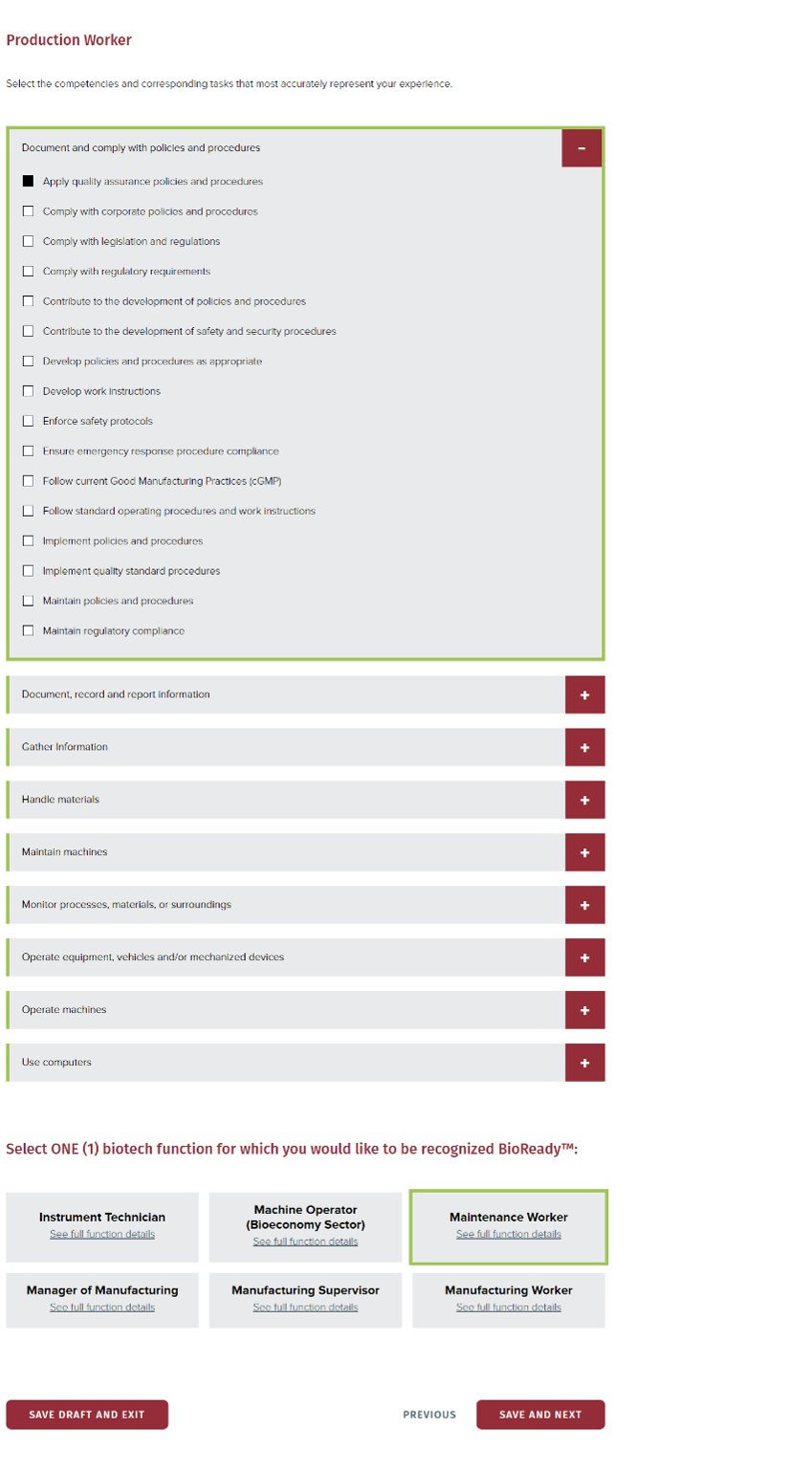Building skills for Canada’s bio-economy
BioTalent Canada positions itself as the catalyst for growth in the Canadian bio-economy by marrying labor market expertise with talent development. It champions workplace excellence, evidenced by its Great Place to Work® certification, and fosters industry resilience through strategic connections between professionals and leading biotech firms.
BioTalent Canada wanted to evolve their website into a centralized digital hub that connects students, employees, and employers, streamlining processes such as resume building, job applications, and employer interactions. Key objectives included attracting top talent across Canada, offering affordable industry-specific services such as job boards and compensation information, and providing tools for job seekers to find jobs and access labor market data. The platform also needed to enable employers to promote themselves as top choices, facilitate access to government-funded programs and grants, support professional development, and be easily managed and updated in-house.
In addition to the core goals, the project also aimed to create advanced tools for the BioSkills Match program. This included automating the screening process for the BioSkills Recognition application, allowing biotech industry experts to efficiently evaluate and validate the skills and experience of job seekers, particularly newcomers. The program would provide successful candidates with BioReady status, enhancing their employability within the industry. The project also focused on making the BioSkills Match platform more user-friendly, simplifying the sign-up and completion processes, and equipping administrators with robust tools for reviews and reporting.
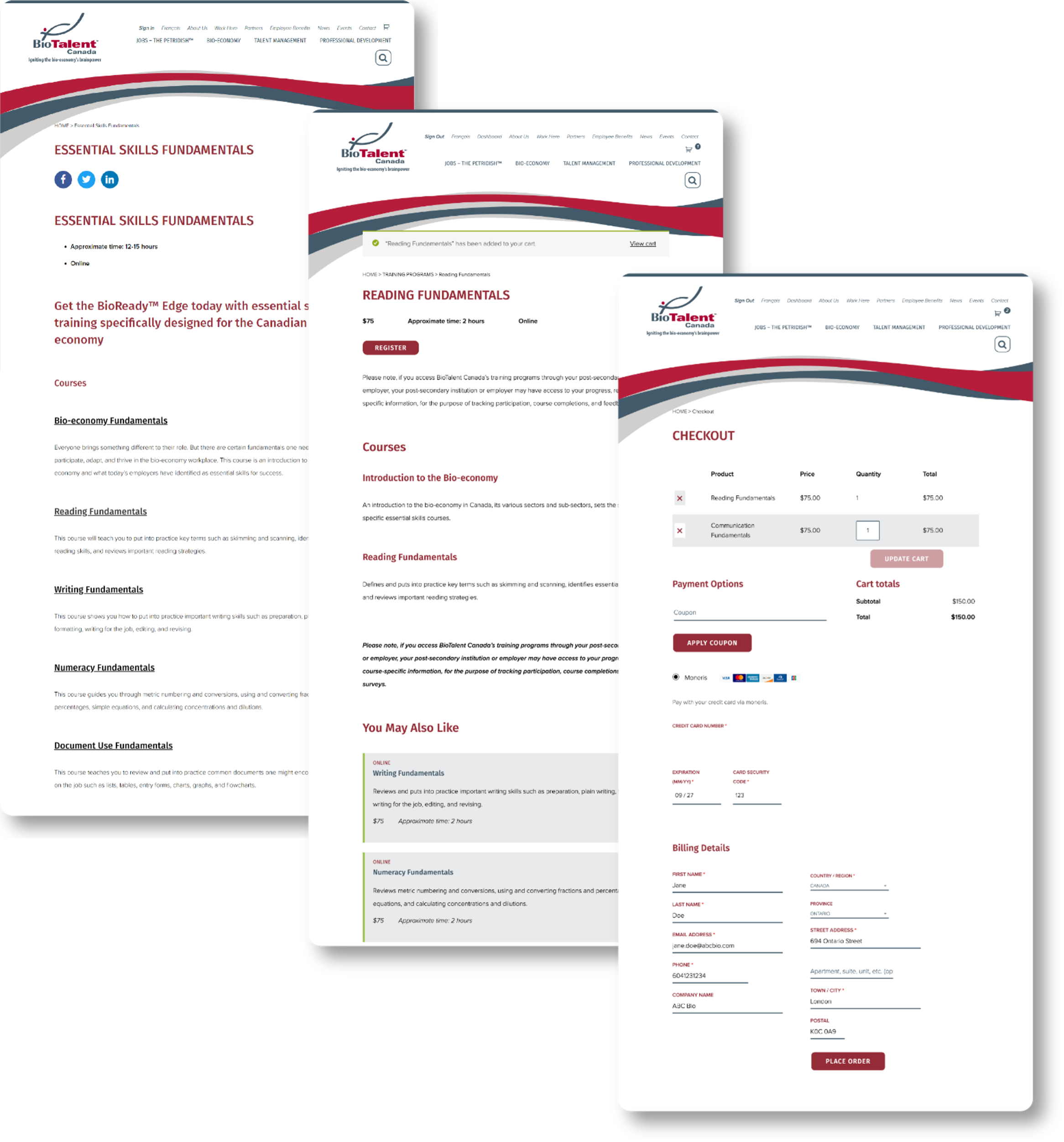
The project faced significant challenges due to the existing infrastructure of BioTalent Canada’s website. The core functionality was built on a custom-made module (BT module) that had not been maintained or supported over the years, resulting in unstable website performance and difficulty in identifying and resolving issues as they arose. Additionally, the lack of documentation for the website and its applications made it challenging to understand how the existing systems were supposed to function, further complicating any troubleshooting efforts.
Moreover, critical applications tied to government-funded projects, such as the BioSkills Recognition Program and product offerings such as The PetriDish, were built using Drupal technology. This presented additional challenges in terms of updates and maintenance, primarily due to a poor user experience with the CMS and a shortage of available development talent familiar with the platform.
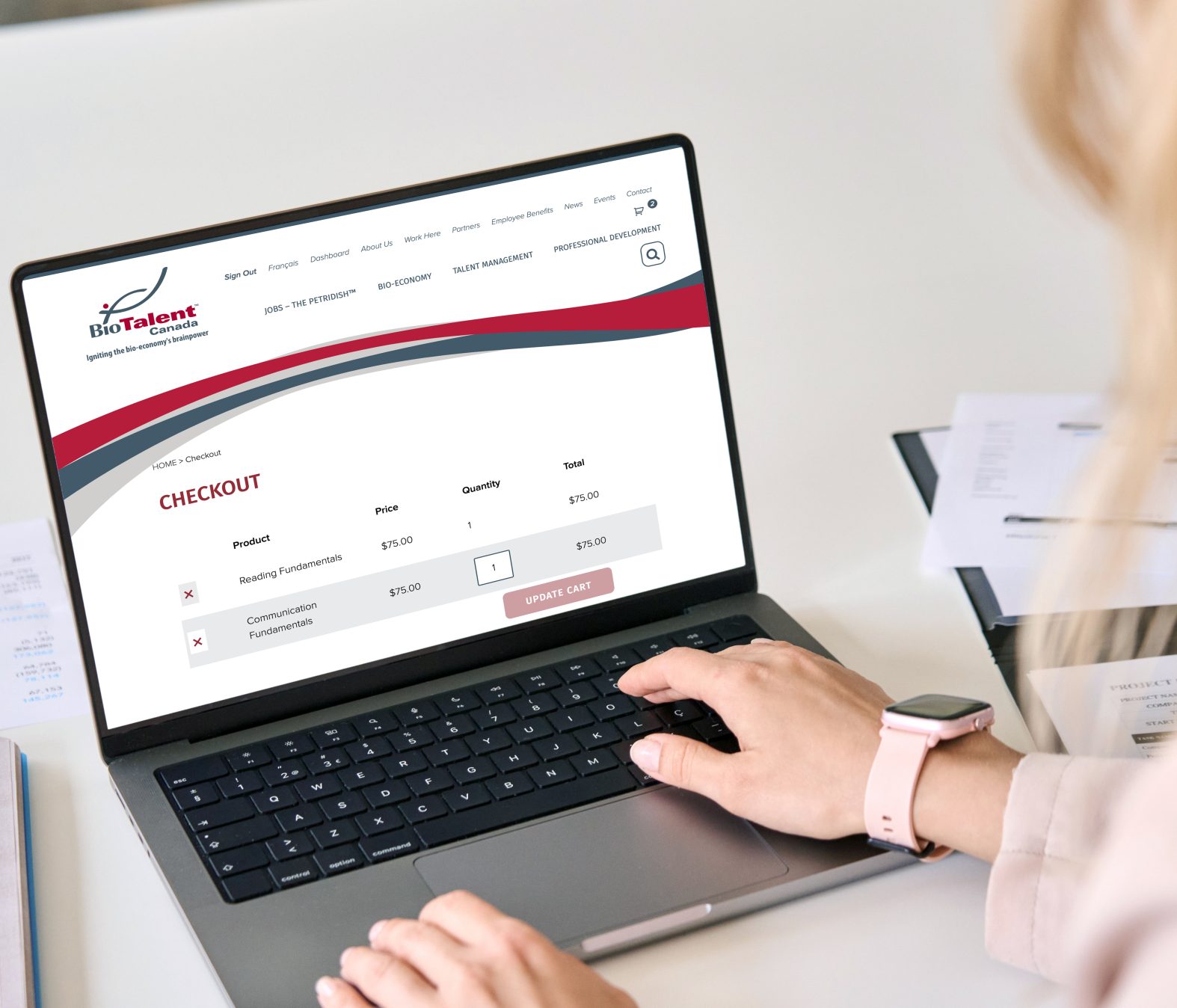

Functionality
Given the scope of MEASURE, our focus was on a key function of BioTalent’s new platform: the BioSkills Recognition Program (BRP). The BRP was designed to streamline the process for newcomer job seekers in the biotechnology sector to achieve and showcase “BioReady” status, addressing the challenge that no definitive body existed to translate foreign education into comparable Canadian outcomes. BioTalent Canada was aptly poised to fill this gap.
The process begins when job seekers create an ePortfolio through their user profile or after completing the online resume builder, a tool built with React and a Django backend. The resume builder allows job seekers to export their resumes to PDF and push them to job boards, which is essential for completing the recognition program as their online resume is integrated into the BioSkills Recognition Program. Within their ePortfolio, job seekers can select positions they have held and BioSkills they possess from the available skills in the BioSkills database, which are based on NAICS job codes. They also have the option to map transferable skills from non-biotech jobs to biotech roles, helping them explore potential new careers within the industry. The system supports complex mapping between BioSkills and competencies, similar to the mapping of programs, courses, and indicators.
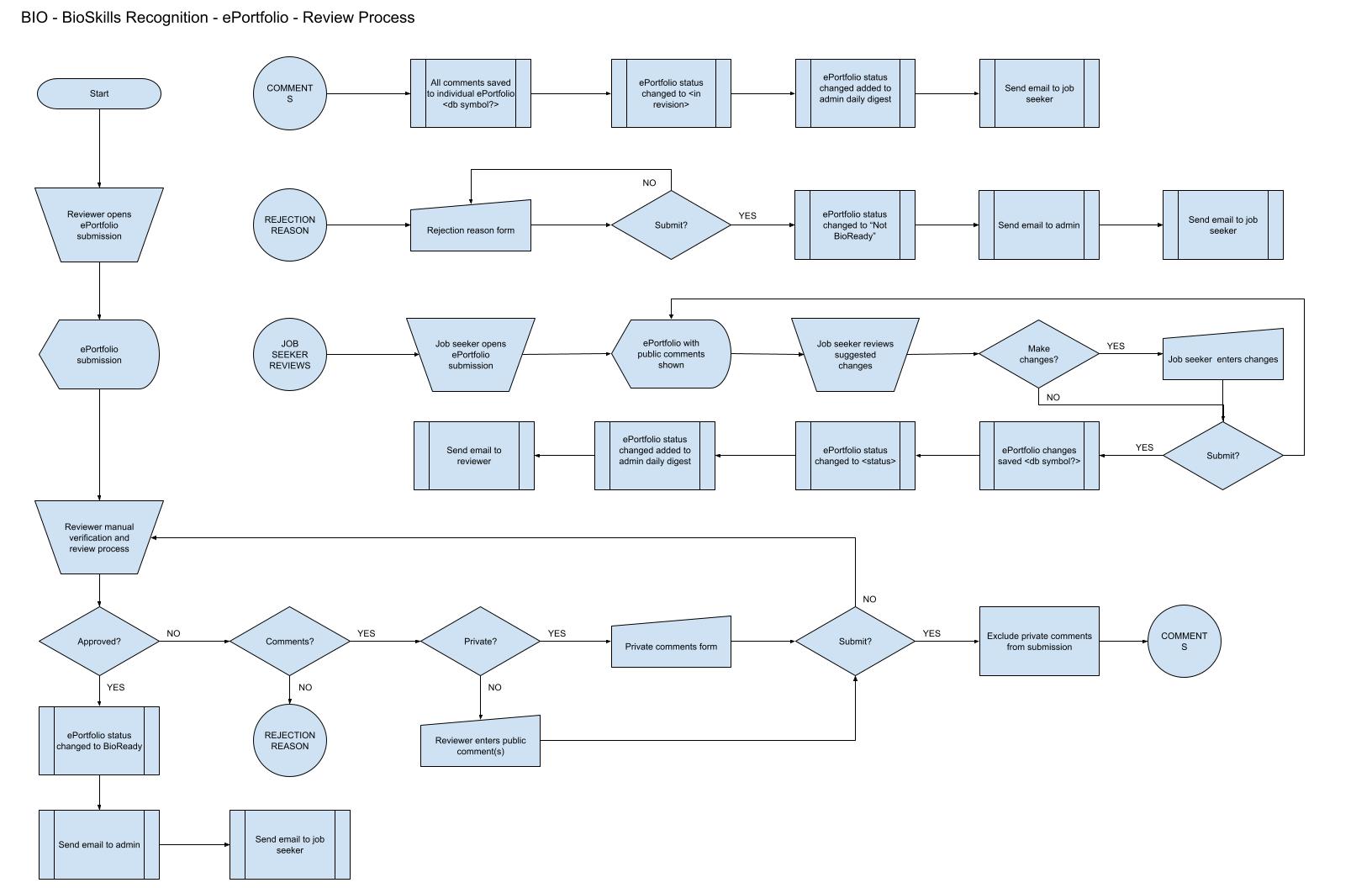
Job seekers must upload supporting documentation into their ePortfolio, which is then submitted for review. The system automatically assigns the ePortfolio to a suitable reviewer based on tags that map to the reviewer’s own vocational experience. Reviewers are notified via email and assess the application, providing comments and requesting changes if necessary. Both the reviewer and the job seeker can interact within the system through contextual commenting functionality to refine the ePortfolio. If a reviewer does not take action within seven days, the system notifies the administrator for potential reassignment.
The process of confirming each competency by the reviewer is analogous to entering measured indicators, with multiple roles defined for both job seekers and reviewers, similar to the roles of “Contributor” and “Department Representative.” Once the reviewer is satisfied with the ePortfolio, they set the job seeker’s status to ‘BioReady,’ and the ePortfolio is automatically moved to the BioSkills Match database. Administrators are notified of the change, and the job seeker receives a congratulatory email along with a personalized, system-generated certificate. The system also provides detailed reporting on the completion status of the recognition program, with daily reports available to administrators for ongoing tracking and oversight.
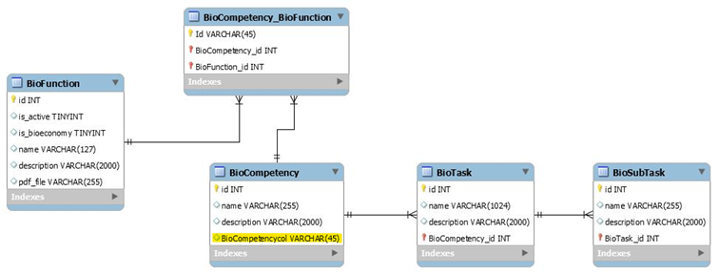
Architectural Overview
- BioSkills: The highest level in the hierarchy, representing specific skills that job seekers can be certified for.
- BioFunctions: Each BioSkill is composed of multiple BioFunctions.
- BioFunctions can be shared across multiple BioSkills, meaning that completing a BioFunction can contribute to multiple BioSkills.
- Competencies: Each BioFunction is further broken down into multiple Competencies.
- Tasks: Competencies comprise tasks that must be completed.
- Tasks can be shared across multiple Competencies, so completing a task for one Competency may also satisfy the requirements for another.
- Subtasks: Each Task is divided into Subtasks, all of which must be completed to fulfill the Task.
This architecture allows for efficient tracking of progress, as the completion of a single Task or BioFunction can apply to multiple BioSkills or Competencies, eliminating redundancies.
Process
Developing this program was a complex and meticulous process, starting with the dissection of BioTalent’s existing platform. With no documentation or guidance available from their previous developer, our team carefully analyzed the existing system to understand its functionality. To ensure the BioSkills Recognition Program met the needs of all stakeholders, we conducted interviews with reviewers to identify gaps in the current system. This input was critical in shaping the new platform. We also developed a visual design based on the style guide we had previously created for BioTalent Canada, ensuring a cohesive and user-friendly interface.
Prototypes of the program were tested with previous BioReady recipients, allowing us to refine the design through multiple iterative cycles. The development phase involved building the system in a Django framework, specifically for all administrative functions not related to content, such as BioSkills recognition, login, and job boards. We seamlessly integrated this with WordPress, which handled all content-related administration. The system underwent rigorous testing before being launched alongside the website.

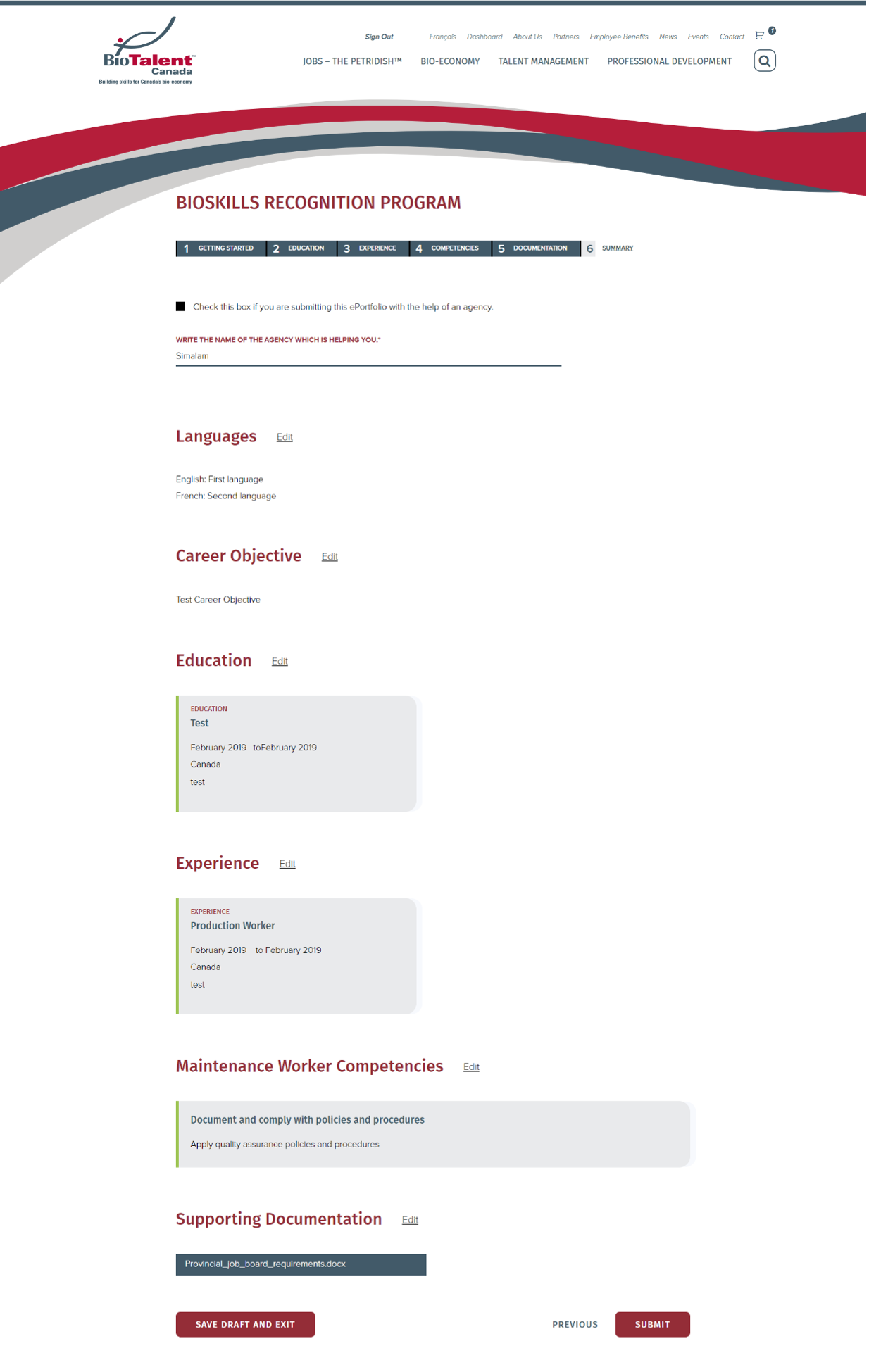
Although formal measurements of the BioSkills Recognition Program outcomes were limited, the available results indicate successful implementation. The platform operated seamlessly from its launch in 2018 until our engagement concluded in 2021. During this period, we successfully onboarded dozens of new reviewers, who required minimal support thanks to the comprehensive documentation we provided. Additionally, hundreds of newcomers navigated the platform and achieved their BioReady status, demonstrating the platform’s effectiveness in streamlining the recognition process and supporting the biotech community.
